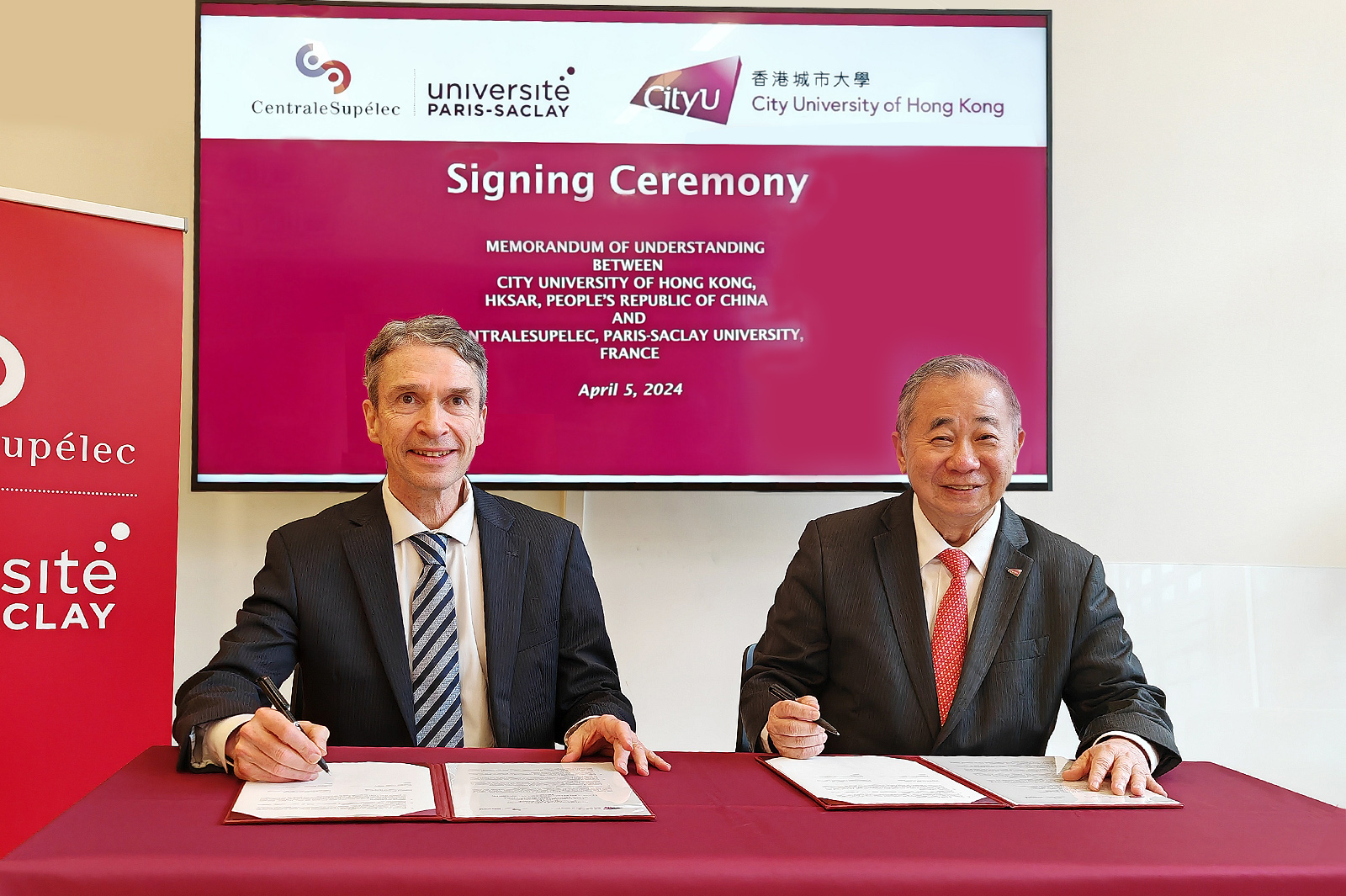CityUHK strengthens collaboration with a top university in France

City University of Hong Kong (CityUHK), one of the most international universities in the world, continues to forge dynamic alliances with esteemed universities worldwide.
A high-level delegation led by Professor Freddy Boey, CityUHK President, visited CentraleSupélec, Paris-Saclay University in France on 5 April. A Memorandum of Understanding (MoU) was signed by President Boey and Professor Romain Soubeyran, President of CentraleSupélec, Paris-Saclay University, to foster academic exchange and further develop the co-operative relationship between the two institutions.
The agreement focuses on the exchange of academic, research and administrative personnel between the two institutions. Additionally, it explores the feasibility of student exchanges and teaching collaboration, and encourages joint research projects in areas of mutual interest. The MoU also facilitates the sharing of joint research results and institutional publications.
“We are pleased to collaborate with CentraleSupélec, Paris-Saclay University, which is recognised as one of the top universities in France,” said President Boey. “In the Times Higher Education World University Rankings 2024, CityUHK was recognised as the Most International University in the world. This reflects CityUHK’s commitment to fostering international collaboration in academic and scientific research. We look forward to joining hands with CentraleSupélec, Paris-Saclay University to promote inspirational, interactive and innovative learning,” added he.